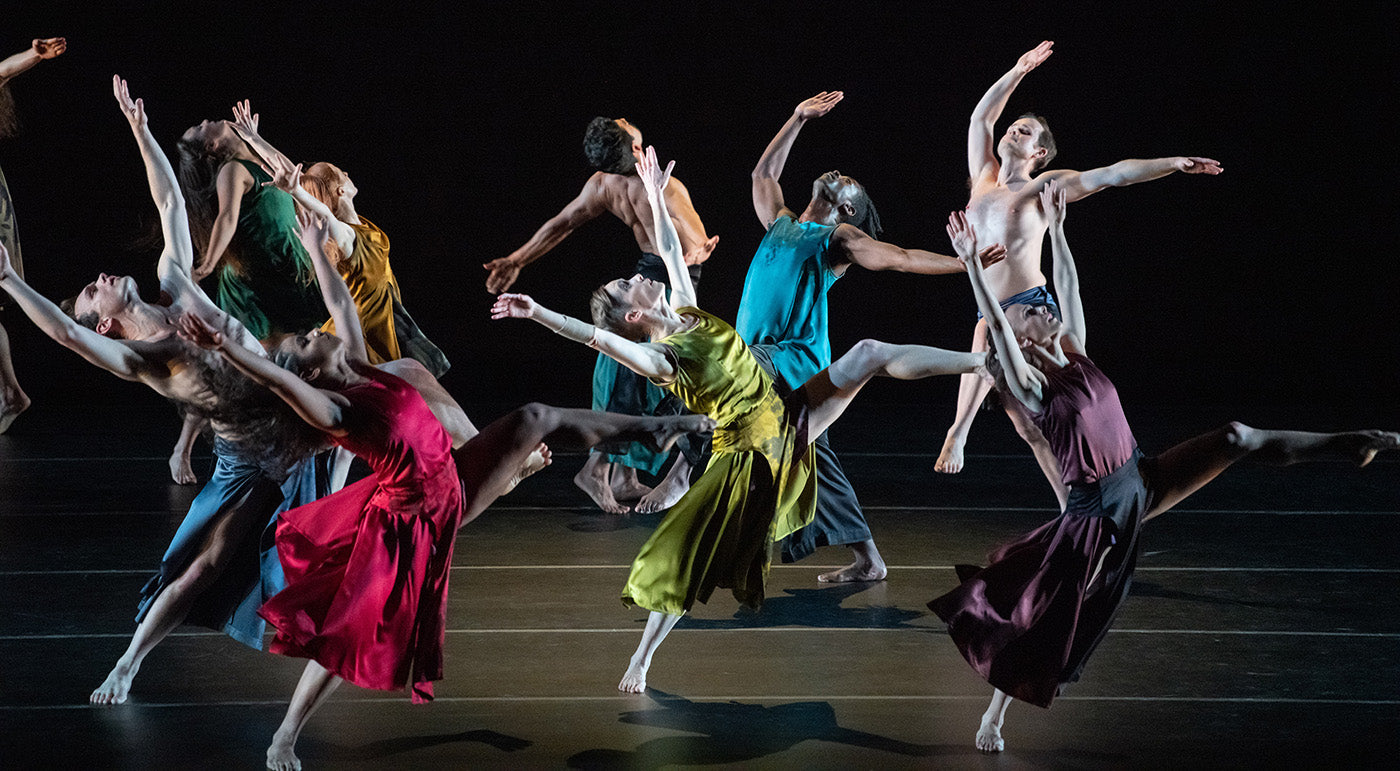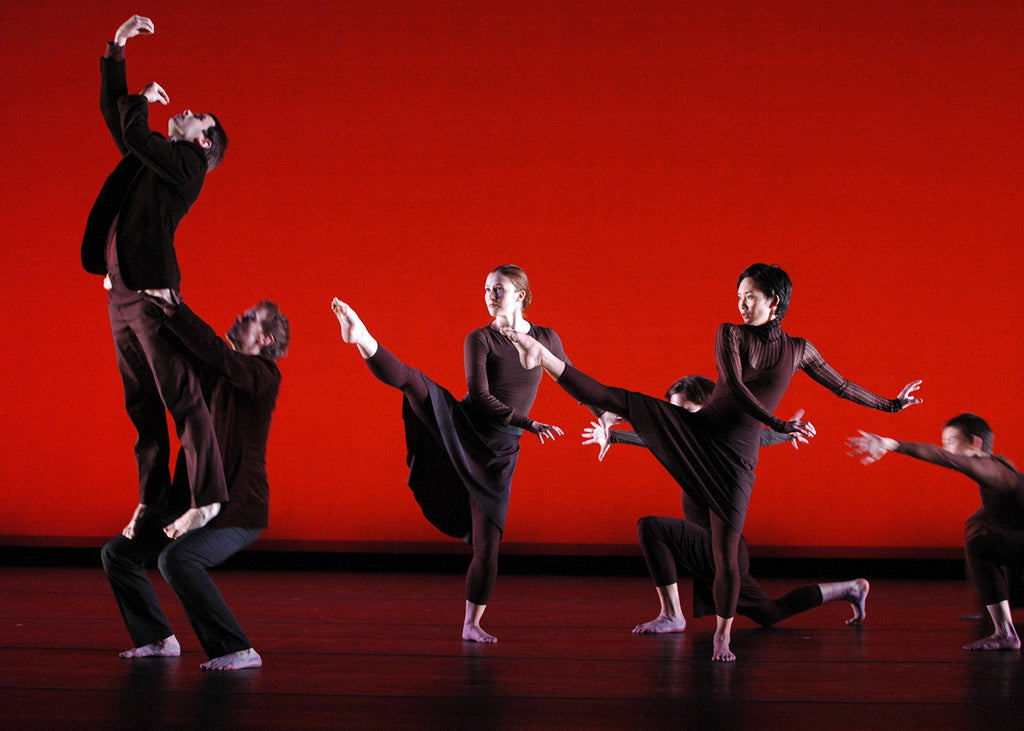How is it that Mark Morris Dance Group never performed at the Joyce Theater until now?
Most of the work I do is in bigger halls, or if I do smaller repertory shows, this sort of chamber-size stuff, I do that periodically at my building. It doesn't hold that many people, but that's where I show these sorts of things because often when I'm doing shows in New York, they're bigger productions in big theaters. We wanted to perform in New York, and we didn't have work here, so we decided to produce a two-week season at the Joyce, which is a very particular place. You know, it was a movie theater so there's no place to fly anything in or out. There's no real crossover, there's no real pitch for music. But the stage itself is great. And I go there all the time—I like it.
We're doing the work that fits there on purpose. We're not doing any music bigger than a quartet. And most of the dances are 20 minutes. Each show is four pieces that are very different, one from the other. We wanted to present these intimate—it just means small—pieces, some of which we haven't done for a while. There's a very brand-new piece, and a very old piece, and a whole bunch of stuff in between.
I'm always so excited when I'm at the Joyce and someone's using live music.
Well, yeah, that rarely happens, frankly, because it's pretty hard to do.
The music and some of the technical elements played into the curation of the programs. Was there a theme or anything else that went into the selection of the rarely seen works, like “Castor and Pollux”?
It's what I wanted to do. Many of the dancers haven't been in any of these pieces before. It's new to a lot of them. I wanted a big variety of stuff. And we haven't done many of these in New York.
And “Castor and Pollux” has never been done [again] because I only work with live music, and this is a recording. But the two pieces on there [that use] recorded music are there because they can't be done live. It's not hypocritical. It's just that one work [“A Wooden Tree”] uses music recorded personally [by Ivor Cutler] that he plays and sings, and he died about 30 years ago. And the other, “Castor and Pollux,” is Harry Partch music, which is impossible to do with live music at this moment, because the instruments are very specific and gigantic. “Castor and Pollux” is not a very long piece, but it's a very early one, so I want to show it. Everything else is piano, string quartet, percussion. It's all chamber music and the pieces will fit on the stage. It's very much varied in every way, in tone and in music, and I hope, in the choreography. I see it as a program that takes two weeks to watch. Everybody should come twice.










I saw the show last night at the Joyce. It was fabulous. It will be so wonderful to see these dances, and to see them again. I agree, I must see them at least twice (and really, more than that, but it takes time) to appreciate them fully.